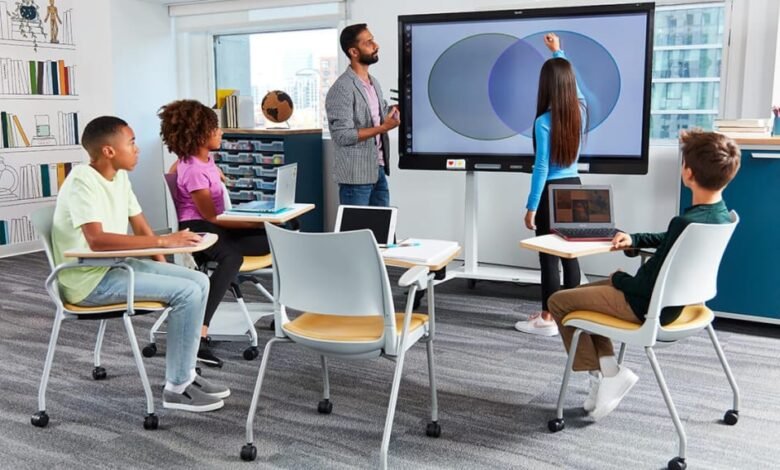How Technology Integration is Transforming Modern Classrooms

In today’s educational landscape, the integration of tech has become not just a luxury but a necessity. Schools across the globe are reimagining traditional learning environments by incorporating digital tools that enhance student engagement and learning outcomes. This digital revolution is changing how information is delivered, consumed, and processed by students of all ages. Educational institutions that embrace these technological advancements often find themselves better equipped to prepare students for an increasingly digital future.
The Impact of Educational Technology on Learning Outcomes
Technology integration in classrooms has shown remarkable benefits for student achievement. When properly implemented, digital learning tools can address different learning styles simultaneously, providing personalized learning experiences that traditional methods often struggle to deliver. Interactive simulations, educational games, and adaptive learning platforms can make complex subjects more accessible and engaging for students who might otherwise struggle.
The data supports this transformation. According to recent studies, classrooms with appropriate technology integration show improved test scores and higher levels of student engagement. However, the key factor remains how these tools are implemented rather than merely their presence in the classroom.
In the modern educational setting, teachers play the crucial role of technology facilitators. Their ability to seamlessly incorporate digital tools into their teaching methodologies directly impacts how effectively students benefit from these resources. Professional development opportunities focused on technology integration have become essential for educators looking to maximize the potential of classroom technology.
Critical Digital Tools Transforming Education
Several key technologies stand out for their transformative impact on education:
Learning Management Systems (LMS)
These platforms have revolutionized how assignments are distributed, completed, and graded. They provide a centralized hub for course materials, discussion boards, and assessments, streamlining administrative tasks while enhancing communication between educators and students.
Interactive Smartboards
Moving beyond passive viewing, modern smartboards enable teachers to create interactive lessons where students can physically engage with learning materials. This tactile interaction reinforces learning concepts and improves retention rates.
Augmented and Virtual Reality
AR and VR technologies provide immersive learning experiences that would otherwise be impossible in traditional classroom settings. Students can virtually explore historical sites, dissect digital organisms, or manipulate 3D models of complex molecular structures.
See also: Importance of Lab Technologists in Modern Healthcare
Addressing the Digital Divide in Educational Technology
Despite the tremendous potential of educational technology, significant challenges remain in ensuring equitable access. The digital divide continues to affect students from lower socioeconomic backgrounds, rural communities, and underserved populations. Schools and districts must develop comprehensive strategies to address these disparities.
Strategies for Equitable Technology Access
Effective approaches to bridging the digital divide include:
- Community technology centers that provide access outside of school hours
- Device lending programs for students without home computers
- Partnerships with internet service providers for discounted home access
- Grant-funded initiatives targeting high-need schools and districts
When implemented thoughtfully, these programs can help ensure that technological advancements benefit all students, not just those from privileged backgrounds.
Professional Development for Technology-Enabled Teaching
For technology integration to succeed, educators need ongoing professional development and support. One-time training sessions rarely translate to effective classroom implementation. Instead, schools should invest in sustained professional learning communities where educators can:
- Share successful strategies and lessons learned
- Collaborate on technology-enhanced curriculum development
- Stay current on emerging educational technologies
- Receive mentoring from technology integration specialists
These professional development efforts should focus not just on technical skills but on pedagogical approaches that maximize the educational value of technology tools.
Building a Culture of Digital Innovation
The most successful technology integration initiatives occur in schools with a culture that embraces innovation and continuous improvement. School leaders play a vital role in establishing this culture by:
- Modeling technology use in their administrative practices
- Recognizing and celebrating innovative teaching approaches
- Allocating resources for technology experimentation
- Creating safe spaces for teachers to take risks with new tools and methods
When educators feel supported in their technology integration efforts, they’re more likely to persevere through the inevitable challenges that arise during implementation.
Measuring the Effectiveness of Educational Technology
Determining whether technology investments are paying off requires thoughtful assessment strategies. Effective evaluation approaches include:
- Comparing student performance data before and after technology implementation
- Gathering qualitative feedback from students, teachers, and parents
- Conducting classroom observations focused on technology integration quality
- Tracking metrics related to student engagement and time-on-task
These evaluation efforts should focus not just on academic outcomes but on broader measures of student success, including collaboration skills, digital literacy, and problem-solving abilities.
Beyond Test Scores: Holistic Benefits of Educational Technology
While improved academic performance remains important, technology integration offers benefits that standardized assessments may not capture, including:
- Enhanced student agency and ownership of learning
- Improved communication and collaboration skills
- Greater access to diverse perspectives and global connections
- Development of critical digital literacy skills needed for future careers
These broader outcomes align with the skills students will need for success in higher education and the modern workplace.
Future Trends in Educational Technology
As we look ahead, several emerging trends promise to further transform how technology shapes learning experiences:
- Artificial intelligence tools that provide personalized learning pathways
- Expanded use of game-based learning to increase student motivation
- Data analytics that help teachers identify and address learning gaps
- Increased integration of coding and computational thinking across subjects
Forward-thinking schools are already beginning to explore these innovations, recognizing that tomorrow’s classroom technology will look very different from today’s.
Preparing Students for a Technology-Driven Future
Perhaps most importantly, classroom technology integration helps prepare students for careers that increasingly demand digital fluency. By incorporating authentic technology experiences into everyday learning, schools can ensure graduates possess the technical and adaptive skills needed for success in a rapidly evolving workplace.
Conclusion: Balanced Technology Integration
As we embrace the potential of educational technology, maintaining a balanced perspective remains essential. Technology should never replace the human connections at the heart of effective teaching and learning but should instead enhance these relationships by creating new opportunities for meaningful interaction and personalized instruction.
The most successful technology integration approaches recognize that digital tools are means to educational ends, not ends in themselves. By keeping student learning needs at the center of technology decisions, schools can harness the tremendous potential of digital resources while avoiding the pitfalls of technology for technology’s sake.
With thoughtful implementation, ongoing professional development, and a commitment to equity, educational technology can help transform classrooms into dynamic learning environments that prepare all students for success in an increasingly digital world.





